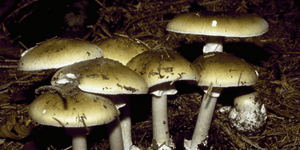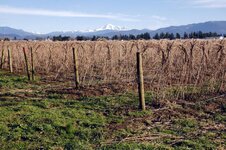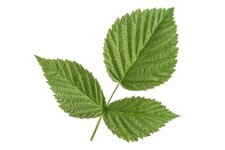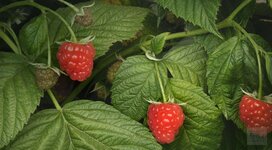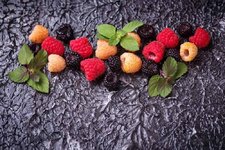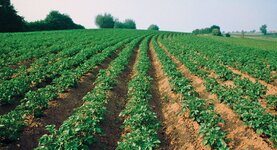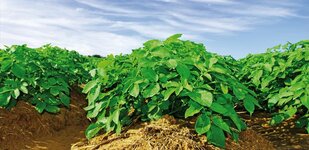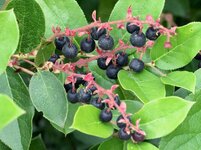Member 34319
- Messages
- 17,146
- Reactions
- 37,067
I've got that one saying stuck in my head.
"People will be standing in a field of food and starve to death."
Id like to create a thread of resources for the regions crops. Detailed pictures, and how to actually eat that crop.
Wild crops can be included too.
DISCLAIMER: I am not advocating theft, this is a knowledge thread. The ethics of what someone will do in the end of the world are up to that person. Most crops are designed for mass sales and will likely either die off in the end or be highly protected in a SHTF world. Knowledge is knowledge however, knowing what is out there can be the difference between life and death.
WHEAT:





Early crops resemble grass, slightly planted apart. The stalk will not appear until most of the plant is about 1-1.5' tall. Green it resembles the wheat we all know and have seen, just green. During mid summer, the farmers stop watering the wheat and the drying starts. The plant terns that vibrant golden yellow. The moisture levels are still pretty high, most farmers harvest once they test the grains for a certain moisture level, and might harvest earlier and finish drying in a silo. Where there are fields of wheat, there are also likely silos of wheat. These silos use fans to circulate air from the bottom up to get the kernels to the correct dryness. Without electricity, they could become a mold and bacteria nightmare. Too dry, and the silo can become a bomb in the right conditions. Not to mention that the silos tend to be closer to the farms housing quarters.
Wheat must be cut and the berries removed from the outer sleeve of the stock. The kernel, which kind of looks like rice, can be ground and used as whole wheat. The kernals can be eaten green, though they taste pretty horrible that way, and are best after being dried. Without processing plants white flour will be a thing of the past unless you feel like wasting a lot of the kernel and it's nutrients. The kernels can be soaked in water and eaten as is with the sprouts that will occur from soaking. They can be boiled in water and eaten as a cereal mush. They can be roasted in a pan and eaten sort of like a pop corn, though it won't really pop.
"People will be standing in a field of food and starve to death."
Id like to create a thread of resources for the regions crops. Detailed pictures, and how to actually eat that crop.
Wild crops can be included too.
DISCLAIMER: I am not advocating theft, this is a knowledge thread. The ethics of what someone will do in the end of the world are up to that person. Most crops are designed for mass sales and will likely either die off in the end or be highly protected in a SHTF world. Knowledge is knowledge however, knowing what is out there can be the difference between life and death.
WHEAT:
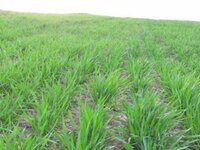
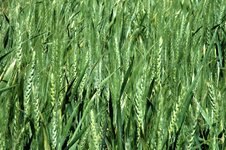
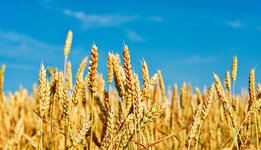
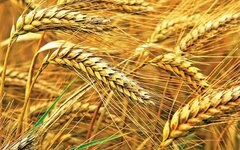
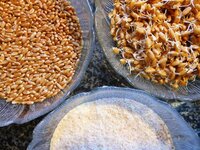
Early crops resemble grass, slightly planted apart. The stalk will not appear until most of the plant is about 1-1.5' tall. Green it resembles the wheat we all know and have seen, just green. During mid summer, the farmers stop watering the wheat and the drying starts. The plant terns that vibrant golden yellow. The moisture levels are still pretty high, most farmers harvest once they test the grains for a certain moisture level, and might harvest earlier and finish drying in a silo. Where there are fields of wheat, there are also likely silos of wheat. These silos use fans to circulate air from the bottom up to get the kernels to the correct dryness. Without electricity, they could become a mold and bacteria nightmare. Too dry, and the silo can become a bomb in the right conditions. Not to mention that the silos tend to be closer to the farms housing quarters.
Wheat must be cut and the berries removed from the outer sleeve of the stock. The kernel, which kind of looks like rice, can be ground and used as whole wheat. The kernals can be eaten green, though they taste pretty horrible that way, and are best after being dried. Without processing plants white flour will be a thing of the past unless you feel like wasting a lot of the kernel and it's nutrients. The kernels can be soaked in water and eaten as is with the sprouts that will occur from soaking. They can be boiled in water and eaten as a cereal mush. They can be roasted in a pan and eaten sort of like a pop corn, though it won't really pop.







